|
|

|
1) Many modern artists no longer attempt to create an illusion of reality. Recall that Renaissance art developed various means for making a 2-dimensional surface appear to be three-dimensional. Their discoveries were used by artists until the middle of the nineteenth century. | ||
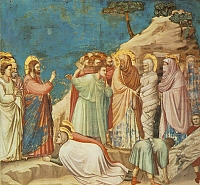 |
Giotto One of the earliest developments in the Renaissance was the depiction of volumetric bodies, seen from a variety of angles. |
|
Masaccio | ||
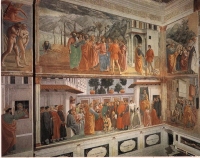 |
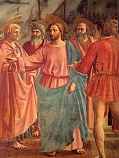 |
Another important discovery was the use of light and shadow, with light from a discernible direction. Figures also seem more three-dimensional when modelled with light and shadow. |
| Compare the three paintings below. Left: a Renaissance painting by Antonello da Messina, Portrait of a Man, 1475; center: a modern painting by Edgar Degas (1834-1917), Mme. René De Gas (or Estelle Musson), 1872-73; right: a modern painting by Paul Cézanne (1839-1906), Dominique Aubert, the Artist's Uncle, 1866. Which painter is more concerned with conveying a three-dimensional sense? Which painting uses light and shadow most subtly? | ||
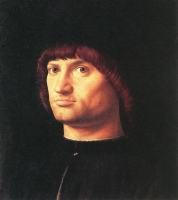 |
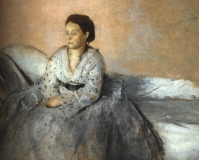 |
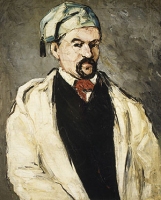 |
An illusion of reality is also conveyed through spatial perspective. One point perspective was invented in the 15th century and used thereafter in paintings as a means of suggesting a three-dimensional world on a two-dimensional surface. Contrast the two paintings below. Which figures seem solidly in a spatial setting? | ||
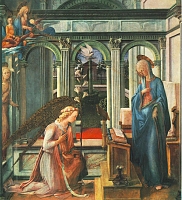 |
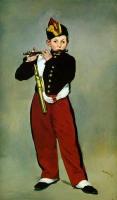 |
Left: Fra Filippo Lippi, Annunciation, before 1443andÉdouard Manet (1832-83), The Fifer, 1866 |
| We looked earlier at two paintings by Édouard Manet (1832-83), his Concert in the Tuileries, c. 1860-62 and A Bar at the Folies-Bergère, 1882. His works are often regarded as the beginning of modernism. His The Fifer (above) and the nude below both occasioned much criticism, simply because they did not follow the rules of painting which had been established in the Renaissance. Manet paints "paper-doll cutouts" purposely. He is saying that a painting is a painting, not an illusion of reality. Below Manet is reinterpreting Titian's famous Venus of Urbino, 1538 (left). Titian's painting celebrates marriage--a "hope chest" is in the background and the dog (Fides/Fido) symbolizes fidelity. Center: Édouard Manet, Olympia, 1863. | ||
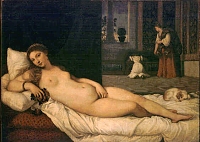 |
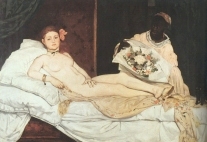 |
Manet's painting not only violates rules of painting, but he also depicts a prostitute, whose admirer has sent flowers. A cat, not a dog, occupies the end of the bed. |
| In the Renaissance and the centuries that followed the interest in perspective led to carefully integrated settings with foreground, middle ground, and distant space clearly delineated in paintings. For example, in Raphael's Marriage of the Virgin, 1504, (left below) the focus is on the group at center stage, but that stage extends logically into the distance. Modern painters are simply not interested in creating the illusion of space. Contrast Degas' At the Milliners, 1882, a composition which owes to Japanese ideas of space, and Cézanne's Mont Sainte-Victoire, 1904-6. Click here to see Cézanne's earlier, more traditional treatment of this subject. | ||
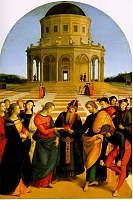 |
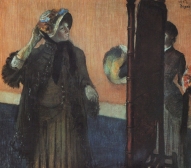 |
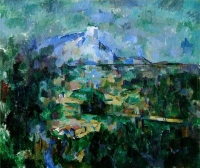 |
The technical developments in the art of Renaissance painting were employed by painters in the suceeding centuries. For example, review David's Oath of the Horatii which sets volumetric figures in a clearly delineated box-like space, creating an illusion of three-dimensional reality. Many modern painters are uninterested in creating this kind of illusion. Many, like Manet, remind the viewer that a painting is a painting. | ||
2) New influences, especially the art of Asia, Africa, and the Pacific Islands, aided in transforming western art. Although the authority of the western art tradition, inaugurated by the Renaissance, waned, new influences were introduced in the west, partly as a result of the expansion of European colonial empires. In the middle of the nineteenth century Japanese prints were introduced in Europe. Note the unusual composition of the Hiroshigi print on the right. The plum branch is dominant in the foreground while the small figures occupy the distance. Compare Degas' At the Milliners above where the mirror bisects the canvas and blocks the view of the clerk. |
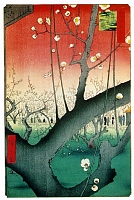 | |
Japanese prints influenced western compositions in other ways. These prints often had strange viewing angles or occult balance of the images; they sometimes used diagonals to direct the eye of the viewer. Below left: Degas, Absinthe, 1876; center: Toulouse Latrec, At the Moulin Rouge, 1892; right: Japanese print | ||
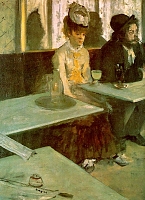 |
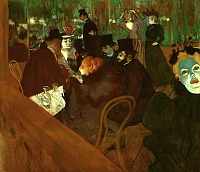 |
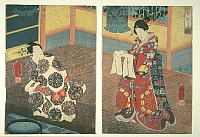 |
A number of artists at the beginning of the twentieth century were influenced by African or Oceanic art. While they often failed to understand the religious significance of the artifacts they admired, these became transformed in their art. Picasso is the most important artist to feel the power of African art. His Self Portrait (below) as well as the groundbreaking Les Demoiselles d'Avignon indicate Picasso's fascination with African sculpture. Left: Picasso, Self Portrait, 1906; center: African mask, Angola, early 19th century; right: African Ancestor figure, East Congo/Zaire, late 19th-early 20th century | ||
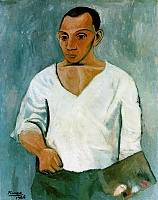 |
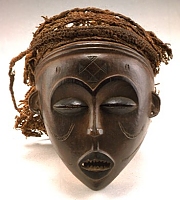 |
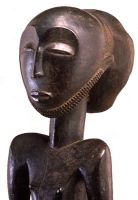 |
Paul Gauguin (1843-1903) was so entranced with non-western cultures that he went to live and work in Tahiti. Still, he is a sophisticated modern artist responding to an innocent and ancient way of life. | ||
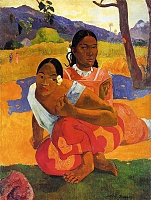 |
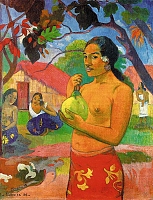 |
left: When Will You Marry, 1892 |
3) Modern artists introduced new subject matter: the extremely personal or subjective, the repugnant, the trivial, the obscure (private symbolism). This trait will be very clear as we look at some specific artists. The two examples below will suffice. | ||
Chaim Soutine, Flayed Ox, 1926 |
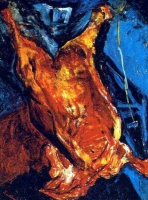 |
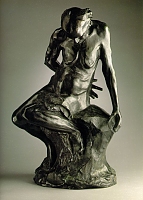 |
4) Many more "isms" or schools/movements are generated in 20th century--so many that no one has made an accurate count. We can't do without "isms" entirely. The Western art tradition by the twentieth century is pretty much international with trends occurring in various countries. The "isms" tell us about main currents. Often they are interrelated so that one artist may belong to more than one artistic movement. Part of modernism is the artistic freedom to create new styles. Many artists feels they have to be different, to define themselves. They often write treatises or manifestos to define their purposes. | ||
| Continue here for examples of modern art. | ||
All images marked MAS were photographed on location by Mary Ann Sullivan. All other images were scanned from other sources or downloaded from the World Wide Web; they are posted on this password-protected site for educational purposes, at Bluffton College only, under the "fair use" clause of U.S. copyright law.